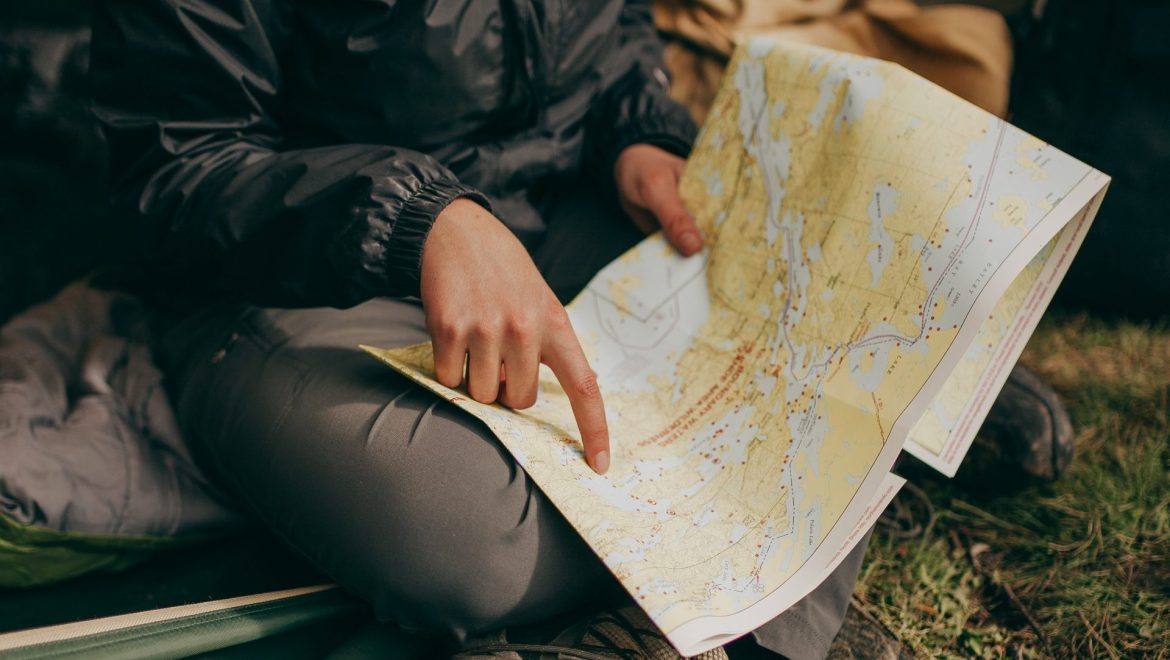Good Planning Before Heading Out
Good planning and preparing for a trip in the backcountry or frontcountry helps to reach an adventure goal safely and enjoyably. Poor planning often results in a miserable experience as well as damage to natural and cultural resources. There are recurrent stories from rangers of campers who, due to poor planning and unexpected conditions, will damage soil and plants, disturb wild animals, and put themselves at risk.
Why Is Trip Planning Important?
- It helps ensure the safety of groups and individuals.
- Dispose of Leave No Trace knowledge and minimize damage to natural and cultural resources.
- It contributes to reaching an adventure goal safely and enjoyably.
- It increases self-confidence and opportunities to learn more about nature.
Seven Elements to Consider When Planning a Trip
- Identify and record the goals of your trip or the expectations of the group.
- Identify the skill level and ability of the trip participants.
- Reaching out to land managers to gain knowledge of the area you plan to visit. Such as maps, reference tools and online sources.
- Choosing equipment and clothing for comfort and safety, and to reduce your impact based on the seven Leave No Trace principles.
- Planning trip activities to match the goals, skills, and abilities of each individual.
- Document your trip upon return and write down what you will do differently next time.

Other Elements to Consider
- Weather conditions and forecasts
- Terrain and trail conditions
- Current regulations, rules, access rights and restrictions
- Temporary or seasonal closures
- Private land boundaries
- Average hiking speed of group and anticipated food consumption. If proper precautions are not taken, leftovers create waste which leaves a trace!
- Group size (does it meet regulations, trip purpose and the Leave No Trace guidelines?)
Meal Planning
The Benefits of Good Planning
- Being able to buy in bulk or stock up on (lightweight) goods.
- Being able to put packaging in the recycling bin at home.
- Reducing waste that needs packing out.
- Lightening your backpack, increasing your hiking pace, feeling less fatigued.
Planning for light weight meals and snacks requires minimal preparation, less packing, lightens loads and limits waste. For example, one-pot meals do not need many cooking utensils or to be cooked on a campfire. Remember, a stove reduces the impact of cooking on the immediate environment.

Prioritizing dried and dehydrated foods as opposed to heavier food cans and fresh vegetables. If possible, removing food from commercial packaging and placing it in sealable bags before going into your backpack. These protect the food and reduce bulk and garbage. To avoid waste, we can wash and reuse ziplocks or use silicone bags instead. Empty bags can be placed inside each other and packed out for reuse at home.
These tips can help reduce the amount of waste your group has to pack out at the end of the trip and eliminate the bad habit of stashing, burying or burning unwanted trash.

Examples of Poor Trip Planning
- A group that is inexperienced or unfamiliar with the geography of an area they are visiting can put people at risk. For example, traveling through areas susceptible to flash floods, along ridge tops vulnerable to lightning activity, or on snow-covered slopes where avalanches can occur. Groups traveling arid lands or areas with no water sources may fail to carry enough water or a way of purifying water from natural sources. Checking in with local land managers, studying maps and weather conditions will lead to a low risk and more enjoyable adventure.
- A group that is unprepared may plan to cook meals over a campfire, only to discover upon arrival at their destination that a fire ban is in effect or that firewood is in scarce supply. This will often result in fires being built anyway, breaking the law or impacting the land due to a lack of alternative planning. Fire bans and scarce wood supplies are signs that an area is experiencing the cumulative effects of heavy recreational use.
- Ill prepared groups may be unable to travel as fast as expected. The terrain may be too steep or the trails too rugged. These groups often resort to setting up camp late at night, sometimes in an unsafe location. Poor campsite selection usually leads to unnecessary resource damage. Besides, the group may never even reach their planned destination.
- Being poorly prepared for the weather forecast can have serious consequences. Uninformed groups on the weather can choose inadequate gear or inappropriate destinations. Lack of such preparation can lead to hypothermia, followed by disorientation caused by hypothermia and to poor decision making and more serious injuries.



